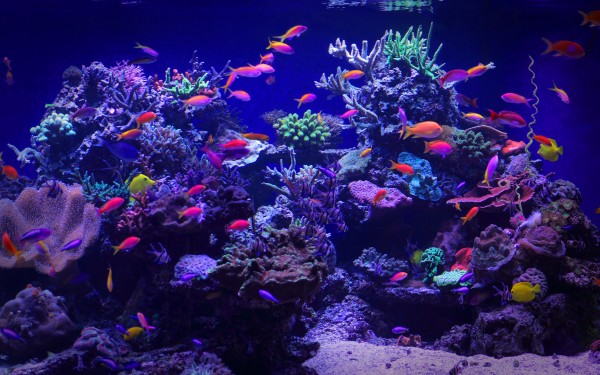Saltwater aquariums that brim with life and color could be an amazing design for your home. These marine ecosystems require commitment and understanding to thrive.
Water changes are a critical component of a healthy saltwater aquarium. They remove the waste and replenish minerals such as alkalinity carbonate, calcium and magnesium.
It is important to sterilize any water you collect from the outside. You’ll also need to monitor key parameters like pH, ammonia as well as nitrite, nitrite and nitrate every week.
Installation of a Saltwater Aquarium
Saltwater aquariums are an excellent method of keeping marine life in a secure and stunning setting. They can also be incredibly exciting. It is also more expensive and requires more time to keep than freshwater aquariums. Before you begin a saltwater reef tank be sure that you’re willing to devote yourself to the hobby.
You need to make sure that you have enough water capacity to fill your aquarium. A minimum of 75 gallons a day should suffice. A TDS meter is required to check the quality of water.
Live rock – Get the best live rock. It will change the aquarium from a basic glass box into an ecosystem, and create habitats for corals. Live rock is a magnet for hitchhikers. (Stowaways). They are the creatures who can destroy your entire aquarium in one strike.
Equipment – Have a sump ready to accommodate your heater, powerheads and Skimmer. It’s helpful to make several holes on the stand to enable you to make use of probes that are connected to your aquarium control. Also, keep a journal in which you record your tests, water changes and other vital information.
Saltwater Aquariums Types
Saltwater aquariums are as stunning and captivating as freshwater ones, but they’re more difficult to maintain and begin. The most important thing to remember is that live rock is a must. It creates habitats for corals, as well as homes for the many bottom-dwelling marine fish as well as invertebrates who bury themselves or dig into it, including Wrasses, Gobies/Blennies, Mandarinfishes, Shrimps and Starfish. It also carries hitchhikers, or stowaways more like, that can destroy your reef in one quick strike.
Saltwater Aquarium Maintenance Tips
Cleaning is a regular requirement for saltwater aquariums. A consistent schedule of cleaning is crucial to ensure the health of your reef tank. The weekly and daily tasks include cleaning the protein skimmer collection cup, filter sock or filter block, cleaning the tank’s glass as well as the tank stand, testing water parameters, feeding the fish, and cleaning algae scrapings off the glass and equipment. Tunze Care Panes, an aquarium-safe glass cleaner can make the task easier. It also helps lessen the annoyance of smudges on the glass of saltwater tanks.
Weekly, a partial water change is recommended to ensure that the salinity is maintained and eliminate waste materials. This is particularly important in tanks with a high population or tanks that contain large samples that produce a significant amount of organic matter.
The most effective investment you can make is an RO/DI at your home. This will help you complete your weekly water changes. This will avoid a trip to your local fish market and enable you to keep fresh, clean reverse osmosis, dechlorinated or reverse water available throughout the day. Make sure you have the freshwater ready before changing it by adding salt from marine to it, airing and heating it to tank temperature. This will ensure that you have as little downtime as possible.

Reef Tank Setup
An aquarium for marine life is a unique and beautiful addition to any home. A marine aquarium can be an excellent tool for education for adults and children alike to understand the ocean’s ecosystems and conservation efforts. A saltwater aquarium is more expensive to maintain compared to a freshwater tank. This is due in large part to the higher cost of initial investment of equipment and lighting, as well as regular maintenance required for the health of the reef.
It is vital to select the right equipment for setting up your reef tank. It is also important to make sure that the tank is suitable for the location it will be set up in. If you can, try to stay clear of windows that will allow the aquarium to receive direct sunlight. Certain corals are damaged by light and some may drown or bleach.
The next step is choosing the filtration system you want to use. It is highly recommended that you select the FOWLR (Freshwater Aquarium with Live Rock) set up because it will provide your reef with the highest quality biological filters. Live rock also hosts a thriving community of bacteria and critters which help keep your water healthy and healthy.
Marine Aquarium Equipment
Thermometers are essential tools for all hobbyists, but particularly in saltwater aquariums, where temperature is essential to have a successful and thriving tank. Thermometers help make sure that the heater is kept at the proper temperature. A basic thermometer can be used to monitor the temperature of the water, defrosting out frozen food items, and even operating the filtration system.
Biological filtration is an integral element of every reef aquarium set-up. Whether you use live rock from a variety of tropical regions or man-made Real-Reef Rock that be ca go dep supports micro algae for the fish to graze on biological filtration is an essential component for any reef tank. It is usually complemented by proteins skimmers or mechanical filters that remove detritus before it can be broken down into nitrates or phosphates.
Research first before putting up your saltwater tank. It’s easy to become overwhelmed by the various methods and strategies that claim to be the most effective method to set up a saltwater aquarium. Stick with one source and learn from it. And, as you get more experience, expand your knowledge.
